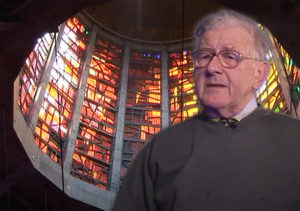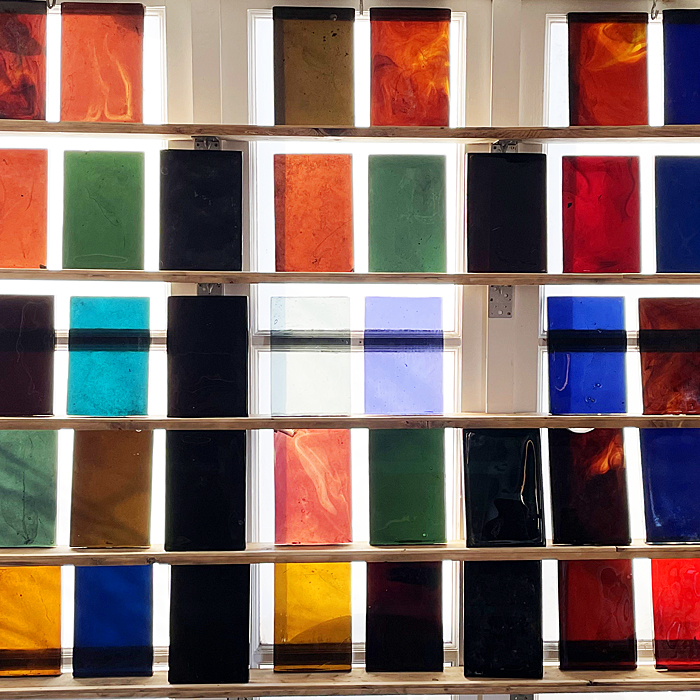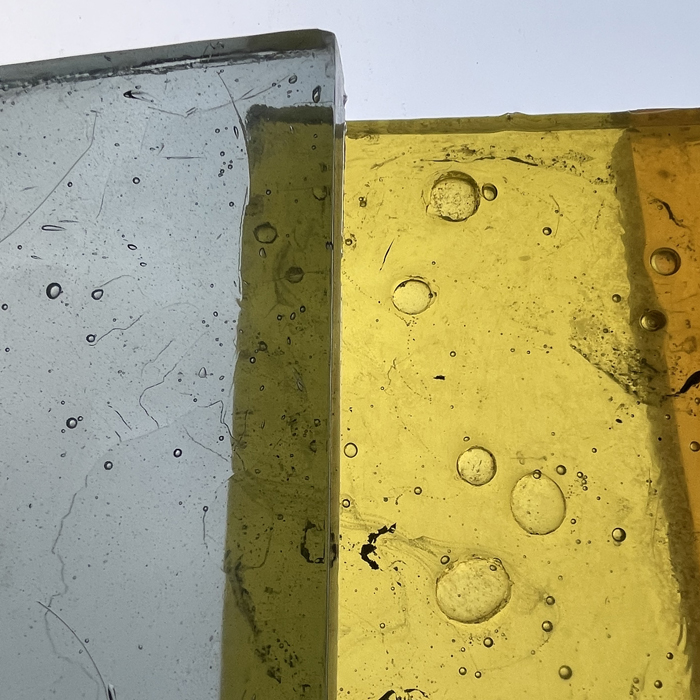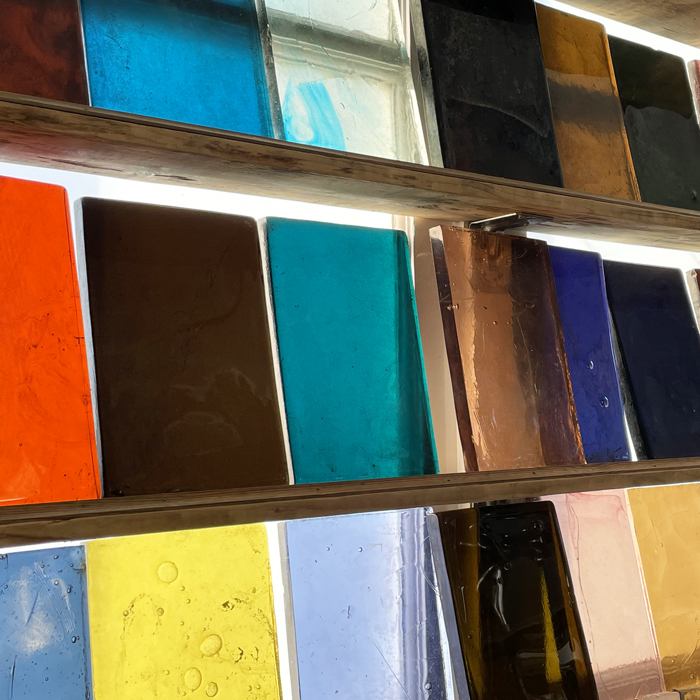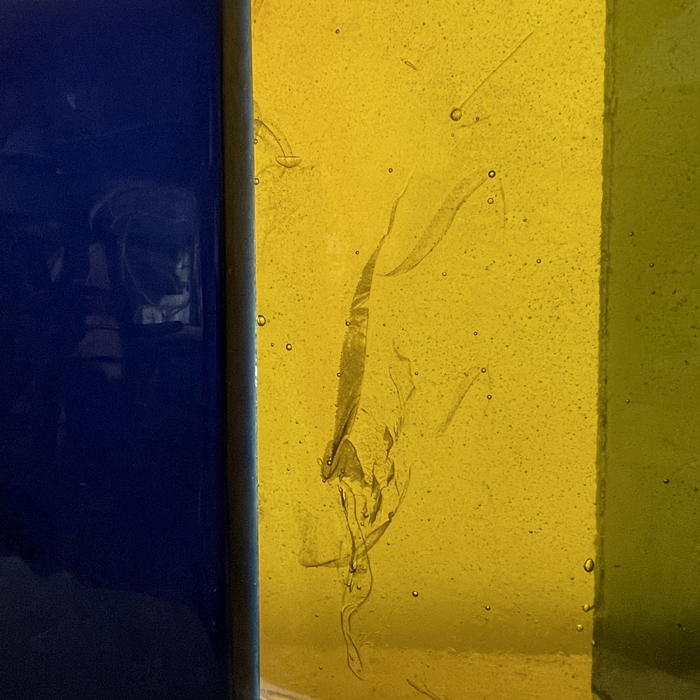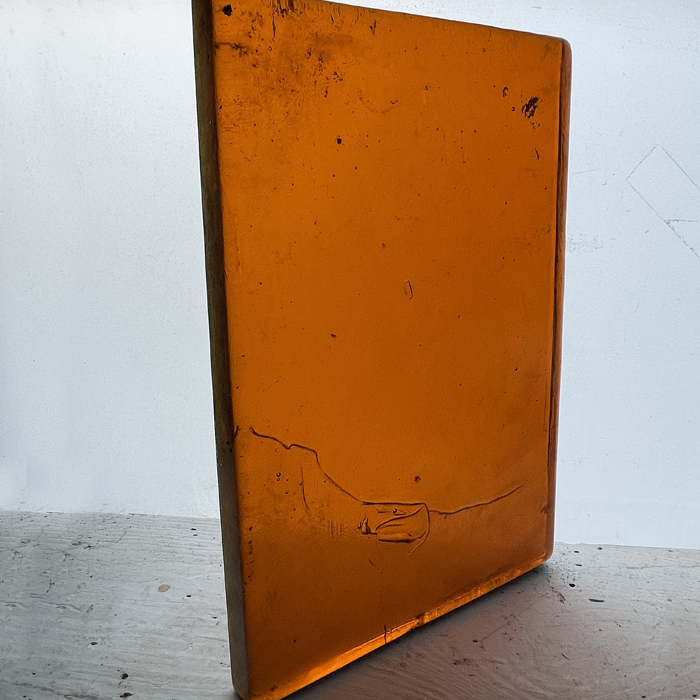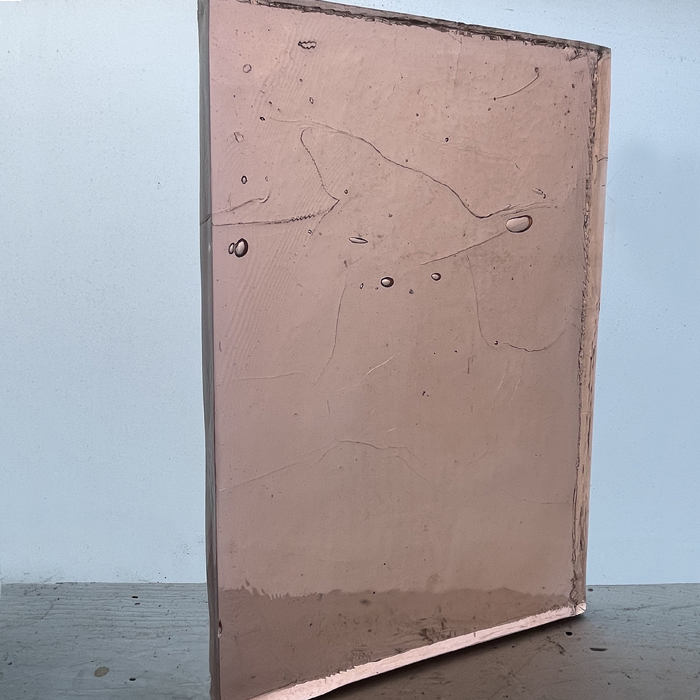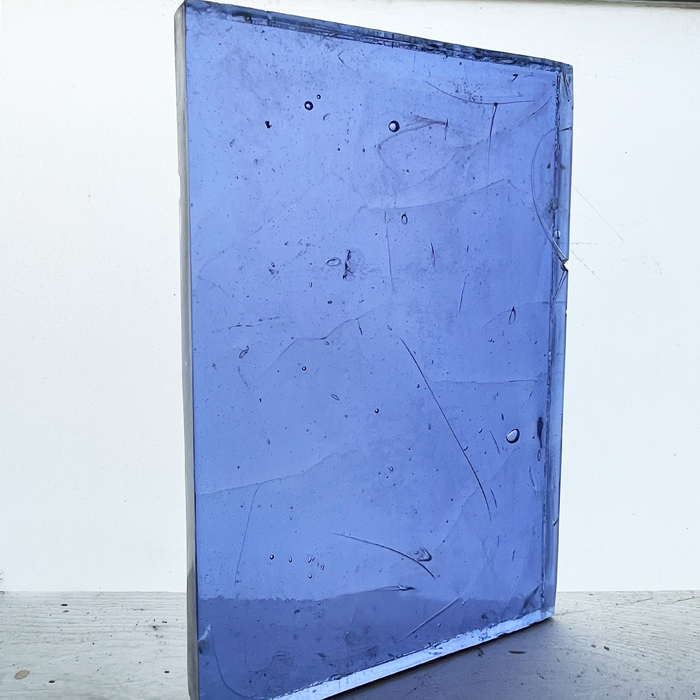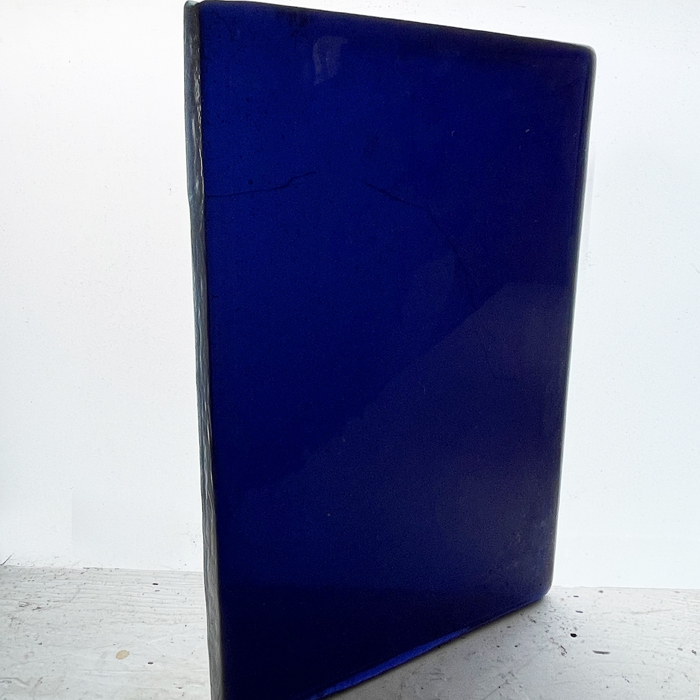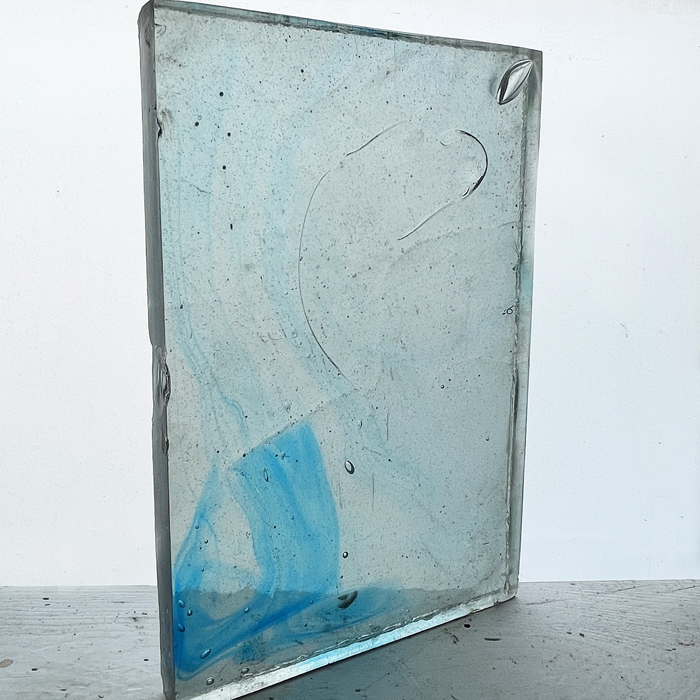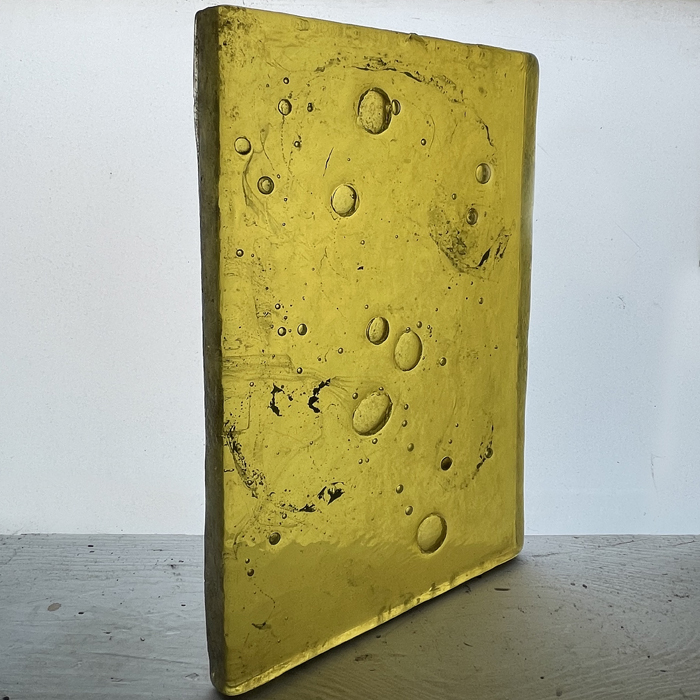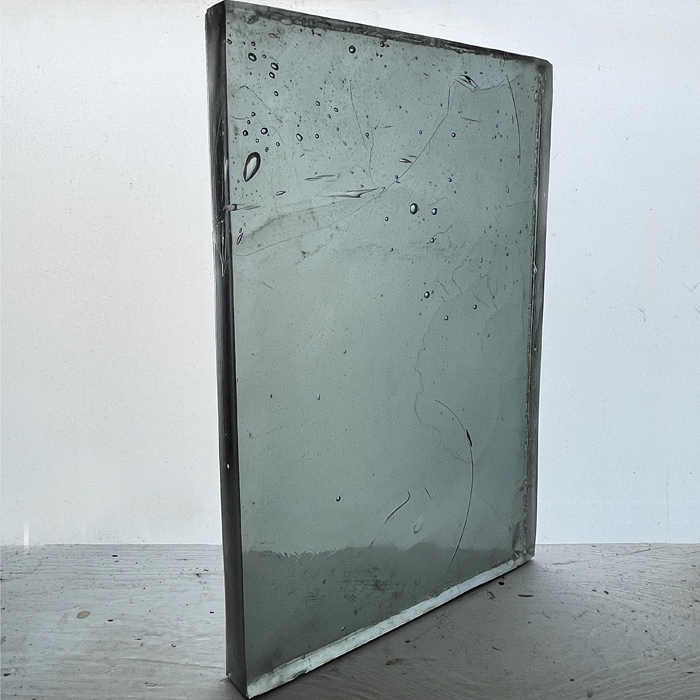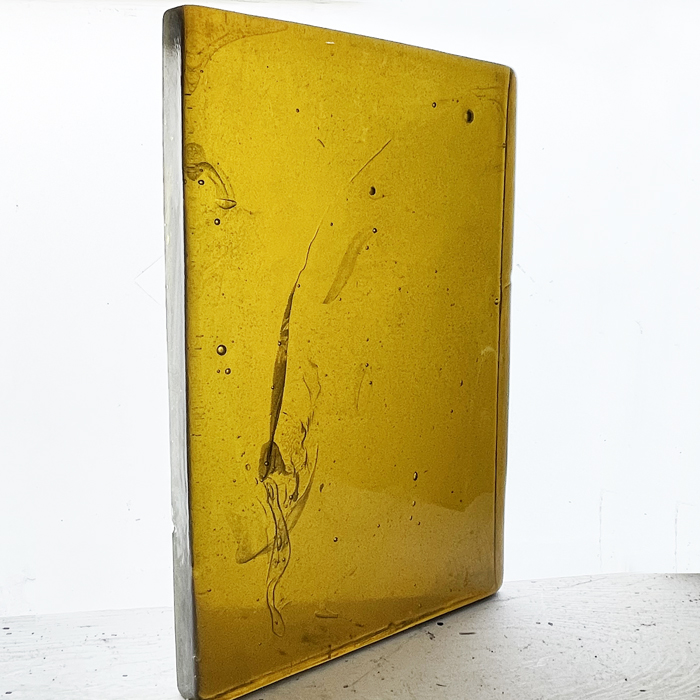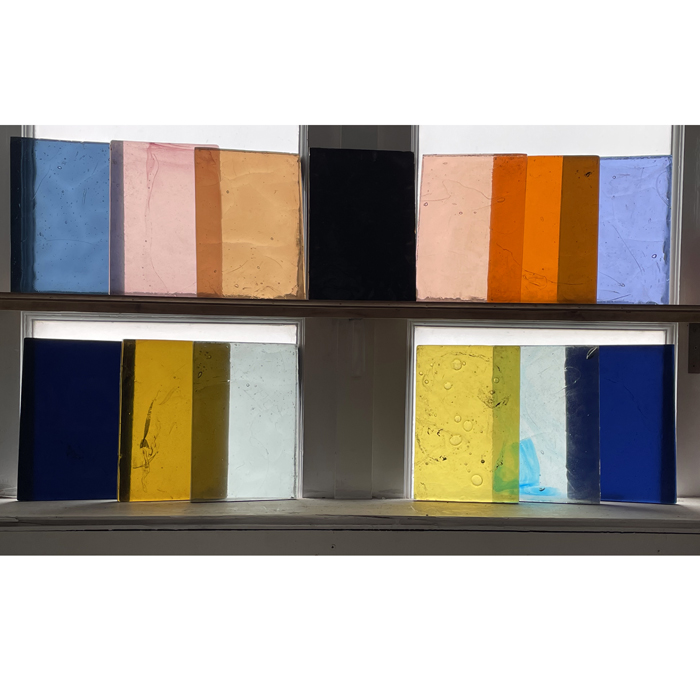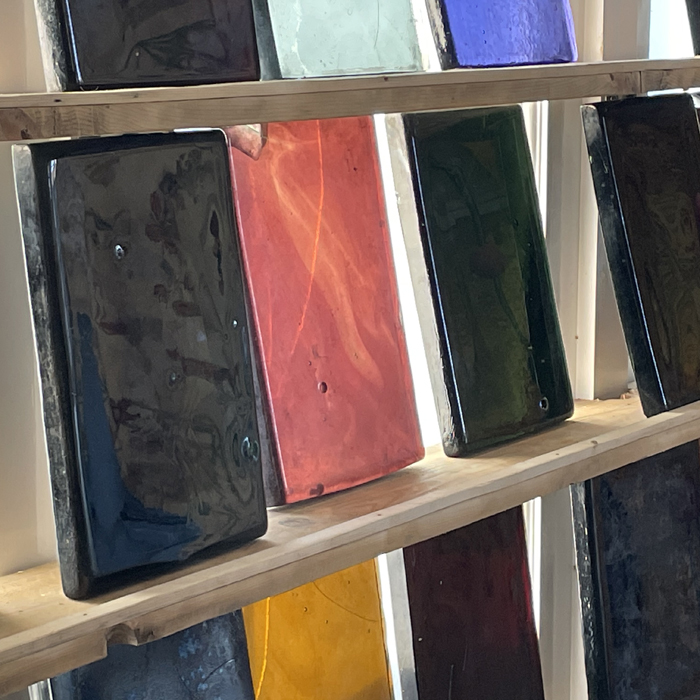Archived Stock - This item is no longer available
A collection of English “Dalle de Verre” stained glass blanks,
each sand-cast glass rectangle, of differing hues, each hand made with inclusions of bubbles and swirls of pigment - a collection of 70No.
SOLD OUT
Dalle de Verre (literally “slab of glass” in French) was a new technique in stained-glass manufacture developed in France by the 1930’s and used in numerous notable architectural projects for the next 40years in both France and the UK.
Stephen Eskilson in “The Age of Glass…”, Bloomsbury 2018, records that the boom of more traditional stained glass making in Europe was all over in the 1920’s but notes that France did see a new impetus for secular glass – as the Art Deco style burst on to the scene at the “Exposition des Arts Decoratifs” of 1925 with thirty-seven stained glass manufacturers displaying their wares there. Alongside that, a “… creative surge reasserted its relevance in ecclesiastical structures [too] … spurred-on by artist, patron, and Dominican clergyman Pierre Couturier”. It was within this resurgence of interest that the new technique emerged.
Couturier was one of the early members of the Art Sacre group founded in 1919 by symbolist painter Maurice Denis (and another) for the propagation of Catholic religious art. Many works of stained glass followed over the next four decades, but among them are included Notre Dame de Toute Grace du Plateau in Assy (1946) with a window by George Rouault and the famous Chapelle du Rosaire de Vence (1951) with stained glass by Henri Matisse. A third was the Sacre-Coeur basilica at Audincourt (also 1951) with a series of windows by Ferdinand Leger where he used the Dalle de Verre technique for his series.
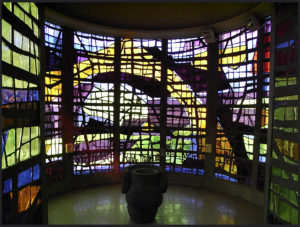
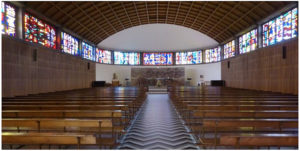
Slabs of sand-cast coloured glass – up to 1” thick are chipped, nibbled and sawn into shape as they are laid out on the bench to the chosen design. Originally a concrete mix was used to pour a matrix around the glass; more latterly a resin is used. Once cleaned up, the windows produced were bold of design and rich in colour.
The technique, was taken up in the UK at John Powell and Sons glass workshop (later Whitefriars) after the arrival there of Pierre Fourmaintraux (1896-1974) in 1956. Fourmaintraux taught Charles Norris the method and Norris, who was later to become a Dominican monk, became the key exponent of the Dalle de Verre in Britain. His influential work can be found in the East window of Buckfast Abbey in Devon and a swathe of notable Catholic churches and cathedrals.
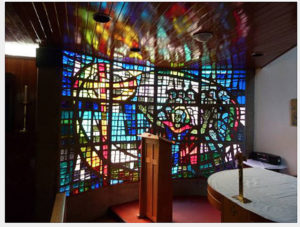
LASSCO has acquired 70 of these Dalle de Verre blanks – we were told they were put into storage, surplus to the vast corona created at Liverpool Metropolitan Catholic Cathedral (locally nicknamed “Paddy’s Wigwam”). The Cathedral, more properly known as The Metropolitan Cathedral of Christ The King, was designed by Frederick Gibberd in 1960. It was completed in 1967 – crowned with its spectacular tapered stained glass corona – one of the largest stained glass windows in the world. It was designed for Gibberd using the Dalle de Verre method by John Piper.
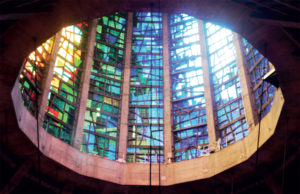
The glass on display at LASSCO Three Pigeons represents a wonderful spectrum of colours and close inspection reveals “inclusions” of bubbles and painterly swirls of pigment. They were almost certainly made by Hartley Woods glassworks in Sunderland now remembered at the Glass Museum located there but today defunct in terms of commercial glass-making.
This British Pathe News-reel demonstrates the Dalle de Verre technique being used at Whitefriars (once you’ve endured the adverts):
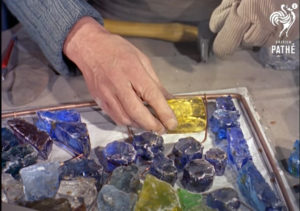
John Piper’s involvement with the design at Liverpool is further explained by the celebrated Stained Glass artist Patrick Reyntiens in this clip:
